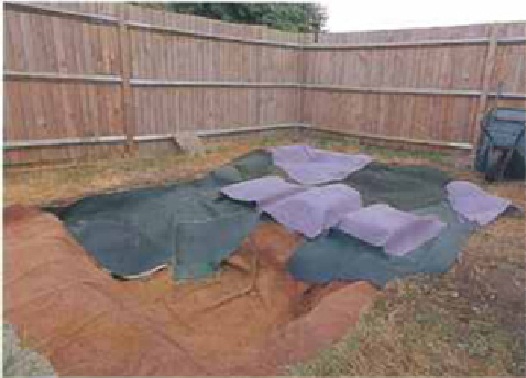
When preparing a site for a pond and before fitting a pond liner, you will need to make sure the ground is smooth as possible and there are no rocks, protruding roots or any other sharp objects. Some people lay down about 50 mm of sand to make a firm base or alternatively you can use a geotextile underlay.
A Geo textile underlay adds a protective
barrier between a liner and the surface it is being installed onto. Used
not only with pond liners, it is regularly used with tank liners and
dam liners, helping protect the liner against sharp objects like rocks
as well as from intrusion from tree roots.
Geotextile underlay is usually
recommended as it is a better alternative to sand. It can hinder root
growth into the pond liner as well as being more flexible with ground
movement.
A good geotextile underlay needs to have a couple of key properties:
- It should be permeable, which means it lets water pass through it.
- It needs to be designed to be laid against soil and dirty conditions, and needs to be rot resistant.
- Finally in needs the ability to separate, filter, reinforce, protect or drain water that might be trapped under the pond lining.
Geotextile underlay material is also a
great DIY solution, as its much easier and quicker to lay than sand. You
can also install the underlay in sections, just overlapping the joins,
which means you waste less by being able to utilise smaller pieces.
Typically made from mechanically bonded
polypropylene needle punched material and usually comes in black, but
can be bought in white or grey colours. This long lasting material is a
recommended addition with making any small or large pond with a pond
liner.
For More Information Visit:- Pond Liner

No comments:
Post a Comment